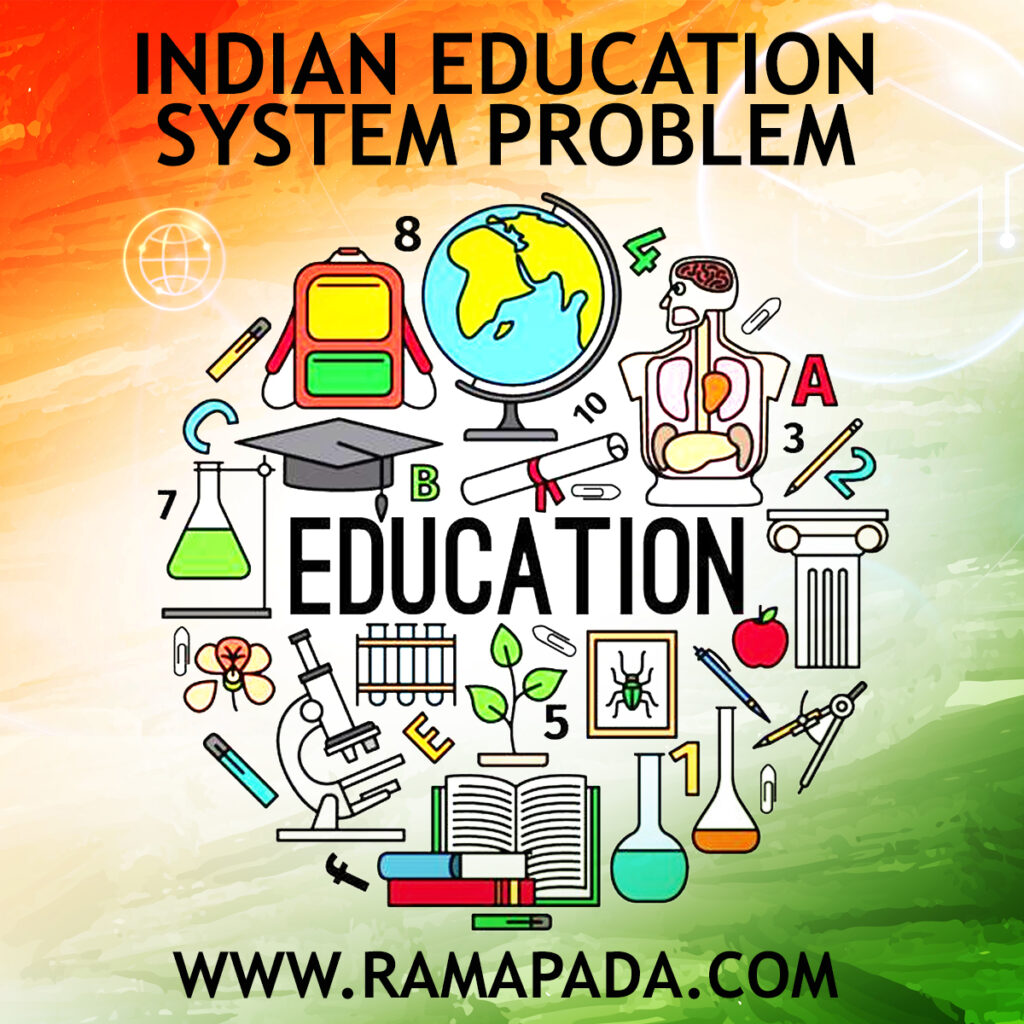India’s education system, while vast and reaching millions of students, faces challenges that hinder its ability to nurture young minds to their full potential. We are here to identify the Indian Education System Problem in our country so that we can solve them and become a great nation in the world.
Why is there an Indian education system problem?
- Unequal Access and Opportunity: Despite strides in enrollment rates, a significant disparity exists between urban and rural schools. Lack of infrastructure, qualified teachers, and financial constraints disproportionately affect children in rural areas and those from underprivileged backgrounds. This limits their access to quality education and perpetuates social inequalities.
- Examination-Oriented System: The heavy emphasis on rote learning and scoring high marks creates a stressful environment for students. This stifles creativity, critical thinking, and the development of well-rounded individuals.
- Teacher Training and Resources: A shortage of qualified teachers and inadequate training for existing ones can significantly impact the learning experience. Outdated teaching methods and a lack of resources like proper learning materials further hinder effective knowledge transfer.
- Relevance to the Modern World: The curriculum may not always keep pace with the rapid advancements in the job market. A skills gap exists between what students learn and what employers require, limiting their employability after graduation.
- Digital Divide: The digital revolution has transformed communication and learning. However, limited access to technology in rural areas and a lack of digital literacy training for both students and teachers create a significant barrier to incorporating technology effectively in education.
Who is responsible for these education problems?
- Government:- They are responsible for setting educational policies, allocating funds, and ensuring access to quality education. Shortcomings in these areas can contribute to problems.
- Educational Institutions:- Schools and universities have a role to play in implementing effective teaching methods and using resources efficiently.
- Teachers:- While many are dedicated, teacher training and support systems can be lacking. This can impact the quality of education delivered.
- Societal Attitudes:- The emphasis on exams and rote learning can stem from societal pressures for high marks over well-rounded development.
How can we solve this Indian Education System Problem?
- Shifting To Focus:- Move away from rote learning and exam-centric pressure. Encourage a more holistic approach that fosters creativity, critical thinking, and problem-solving skills.
- Teacher Training and Support: Invest in ongoing professional development for teachers, equipping them with modern teaching methods, technology integration skills, and effective classroom management techniques.
- Equalizing Opportunities: Bridge the gap between rural and urban schools by allocating more resources to rural areas. This could involve improving infrastructure, attracting qualified teachers, and implementing initiatives like digital education to enhance access to quality learning materials.
- Skills For the Future: Integrate vocational training and practical skill development into the curriculum. This will better prepare students for the demands of the job market.
- Technology in Education:-Utilize technology effectively. Online learning platforms, educational apps, and digital resources can supplement classroom teaching, personalize learning experiences, and make education more accessible.
- Public-Private Partnerships: Explore Public-Private Partnership (PPP) models to leverage private sector expertise and resources to improve infrastructure, curriculum development, and teacher training.
- Community Involvement:-Encourage parental and community participation in education. This can create a more supportive learning environment and raise awareness about the importance of education.
- National Education Policy (NEP) 2020:-The recently implemented NEP aims to address many of these concerns. It emphasizes a shift towards a more experiential and holistic learning approach. The success of this policy will depend on effective implementation and adequate resource allocation.
Conclusion:-
By acknowledging these challenges and working towards solutions to the Indian education system problem, India can create a robust education system that empowers its youth and equips them to be the driving force behind the nation’s progress. So, we will make a great future together when we focus on improving teacher training, incorporating technology, and making the curriculum more relevant to the modern world.

